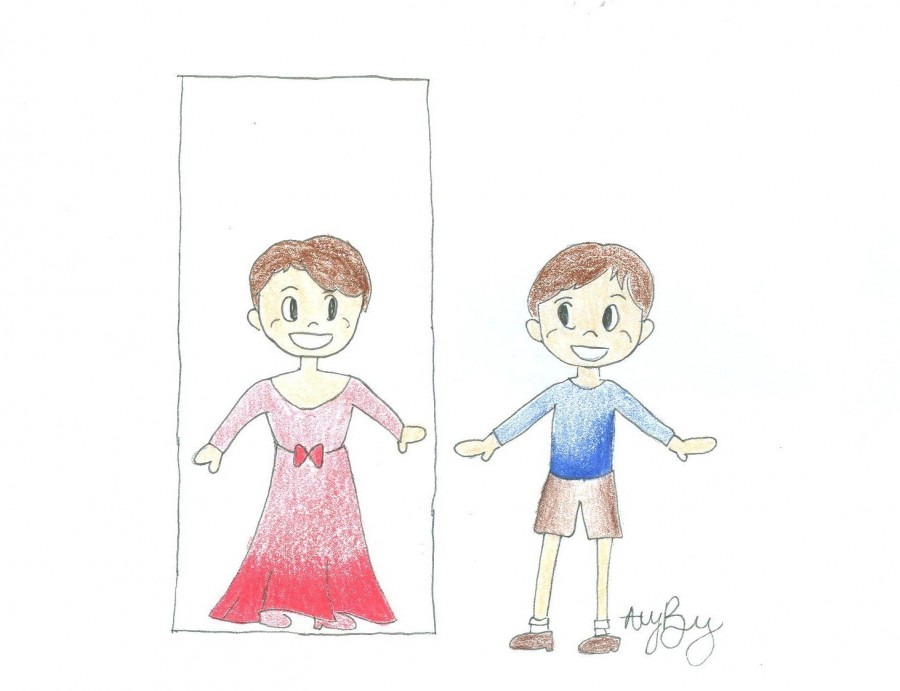Making gender norms less normal
November 30, 2015
Although I don’t vividly remember my first day of kindergarten, I’ve heard about the kids who won’t let go of the safe grip of a steady hand that belongs to mommy or daddy – the children who are too afraid to say goodbye and set off into the cruel world of five-year-olds and crayons, all alone. It is scary enough to be away from their parents for several hours, so one can only imagine how difficult it would be if a little boy stepped into his new classroom and was greeted with disapproving stares of confused peers and their unaccepting parents. All because he wanted to wear his sister’s dress to his first day of school.
If a boy wants to join his older sisters in the innocent act of painting his nails pink, let him. If a girl wants to cut her hair short and play catch with the neighborhood boys, let her. Trying to stuff children into the close-minded boxes of feminine females and masculine males only helps push the societal norm that women stay at home and cook dinner while men chop wood in the backyard after work – haven’t we, as a society, moved past this? For the most part, at least? Although we still have a lot of work to do, women have come very far, so why can’t we extend this progressive ideology onto children’s gender norms?
Now, the suggestion is not that all parents experiment on their children and send their sons to school in heels against their will- that would be ridiculous. But rather that we loosen up as a society and allow children to have curiosity that runs free. Don’t demand that a young girl wears baseball caps, but do allow her to try one out when she goes to her next play date if she shows interest in it and asks to wear one.
Some young children that choose to dress up in a way that society would usually identify with the opposite sex are genderqueer or gender-nonconforming, meaning that they do not think of themselves as either male nor female, or that they think of themselves as both. According to a New York Times article on children breaking gender barriers, little research has been done on gender-nonconforming children. Because of this, it isn’t possible to receive definite numbers as to how many children venture out of these gender boundaries.
Somewhere between two and seven percent of boys under 12-years-old regularly display “cross-gender” behaviors, according to that same New York Times article. It is important to know, though, that very few of these boys actually want to become girls. These boys, often referred to as “pink boys,” usually stop cross-dressing and other unconventional behaviors when they hit 10-years-old because they just “grow out of it.” This information shows that gender-nonconforming children and transgender children were born that way – allowing a boy to dress up in a princess outfit will not cause him to be gay or want to become a girl. It will simply allow him to understand that gender norms can be crossed, challenged and changed.
Although “pink boys” may grow older and come out as gay, or realize that there was really a girl inside their bodies all along, cross-dressing does not cause this. The fear that allowing a little boy to wear barrettes in his hair will cause him to become gay is irrational. Yelling at a little girl for wearing a “boy’s” Spider-Man t-shirt and demanding her to change into something more “ladylike” is limiting her freedom and forcing her to think inside of a very small and confined box.
Don’t make that little boy’s first day of kindergarten harder than it needs to be – accept him for who he is and allow him to experiment. Let’s create new gender norms, ones that won’t keep us stuck in the past.
